Helen Fairchild
Contributors
- Kaya Bassett
- Rachel Oliphant
Editors/Reviewers
- Sean N. Bennett, RN, MSN - Associate Professor - Utah Valley University
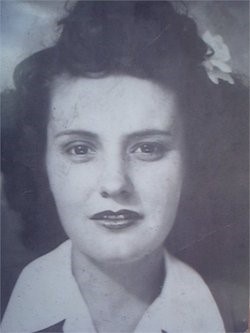
The Early Years
Helen Fairchild was born in Turbot Township, Milton, Pennsylvania November 21, 1885. She was the fourth of seven children of Ambrose Fairchild (1856-1940) and Adda Louise Dunkle Fairchild (1861-1931). The children's names (in order) were:
- Sol
- Hunter
- Helen
- Edwin (Ned)
- Christine
- Blanche
- Donald
Helen was raised, as well as worked, at Reaser Farm in Union County.On many occasions, Helen and her sister, Christine, had to lift heavy milk cans onto a milk wagon to run down to the creamery, which worried Christine because Helen was not a very big person. Because Helen was so small there is a chance it was correlated with the problems she had with indigestion and abdominal pain throughout her life. She worked hard to get through it.
Helen's father, Ambrose did not like to spend money on extravagant things. He owned the farm they worked on. On one occasion, Helen was given the task to take care of chickens and in return she could save the money she received from the eggs. When her father learned of this deal, he took the money she had saved and kept it for himself. Helen's childhood home was built of brick and stucco, but that did not stop them from making the best of their space. Her brother, Ned, recalls the two front rooms in their house were big enough to "drive a team of horses from one room to the other," and that the house had a staircase that spiraled to the attic. The house was later accepted by the Historical Society in 1978 due to the architect, Benjamin Griffey, who had built it and the architectural design.
Helen left to study nursing at Pennsylvania Hospital in Philadelphia and graduated in 1913 at the age of 28. According to letters written to her family, she exhibited signs of stomach problems while in nursing, but that did not stop her from nursing. In October of 1916, the United States formed the Army Reserve Nursing Corps, to which Helen, as well as nurses from surrounding schools, had soon enlisted. In 1917, she and 63 other nurses from Pennsylvania Hospital sailed overseas to France. She was assigned duty as Nurse on May 7, 1917, and nursed during in Flanders during the Battle of Passchendaele. Helen served with the American Expeditionary Force while in France.[1][2]
Helen combated a series of problems near the end of her life as she did her best to help the soldiers in need. She willingly gave up a gas mask to a soldier and was exposed to mustard gas, her stomach pains came back and she found out she had an ulcer and after surgery fell into a coma and a lot of pain. The accumulation of all of this stressed out her body and she died of liver failure in 1918. [1][3]4]
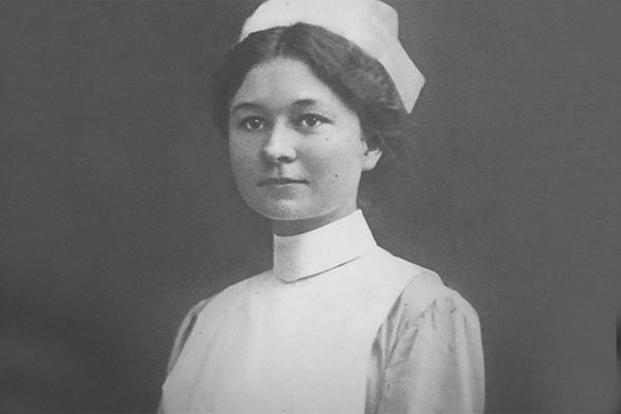
Military Career
Thanks to letters Helen wrote through her short military career, it is possible to know and understand what nursing was like. She entered the war in May of 1917, by starting with an 8 day voyage to Liverpool, England. In letters to her mother, Helen described, not only the journey but the uniforms which were dull and heavy and required to be worn all the time.
Helen was sent to the British Base Hospital No. 10 located in France, which later became known as Pennsylvania Base Hospital No. 1 because of the 64 Pennsylvania nurses that were stationed there. As soon as she, and the other nurses, arrived they were immediately set to work on the many soldiers that were poisoned with mustard gas (or sulfur mustard).[5] Everyday new soldiers were admitted to the hospital.
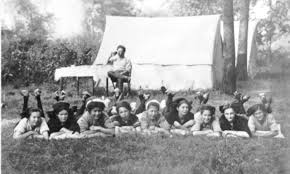
When July came, Helen was transferred to casualty clearing area from the base hospital. She was only expected to stay for a couple of days but ended up staying for months. The conditions were less than passable with mud that came up past their shoes and uncomfortable tents for living. Helen was a part of the operating room where she not only passed instruments or sponges, but was left to close wounds or insert drains while the doctors left to other soldiers.
By October 1917 she was back at the base hospital. In November, Helen got tonsillitis and was able to recover, but her stomach pain from earlier in her life came back. This pain was enough to let her be relieved of her duty and she stayed around to get medications and treatments but none of them seemed to help. [3][4]
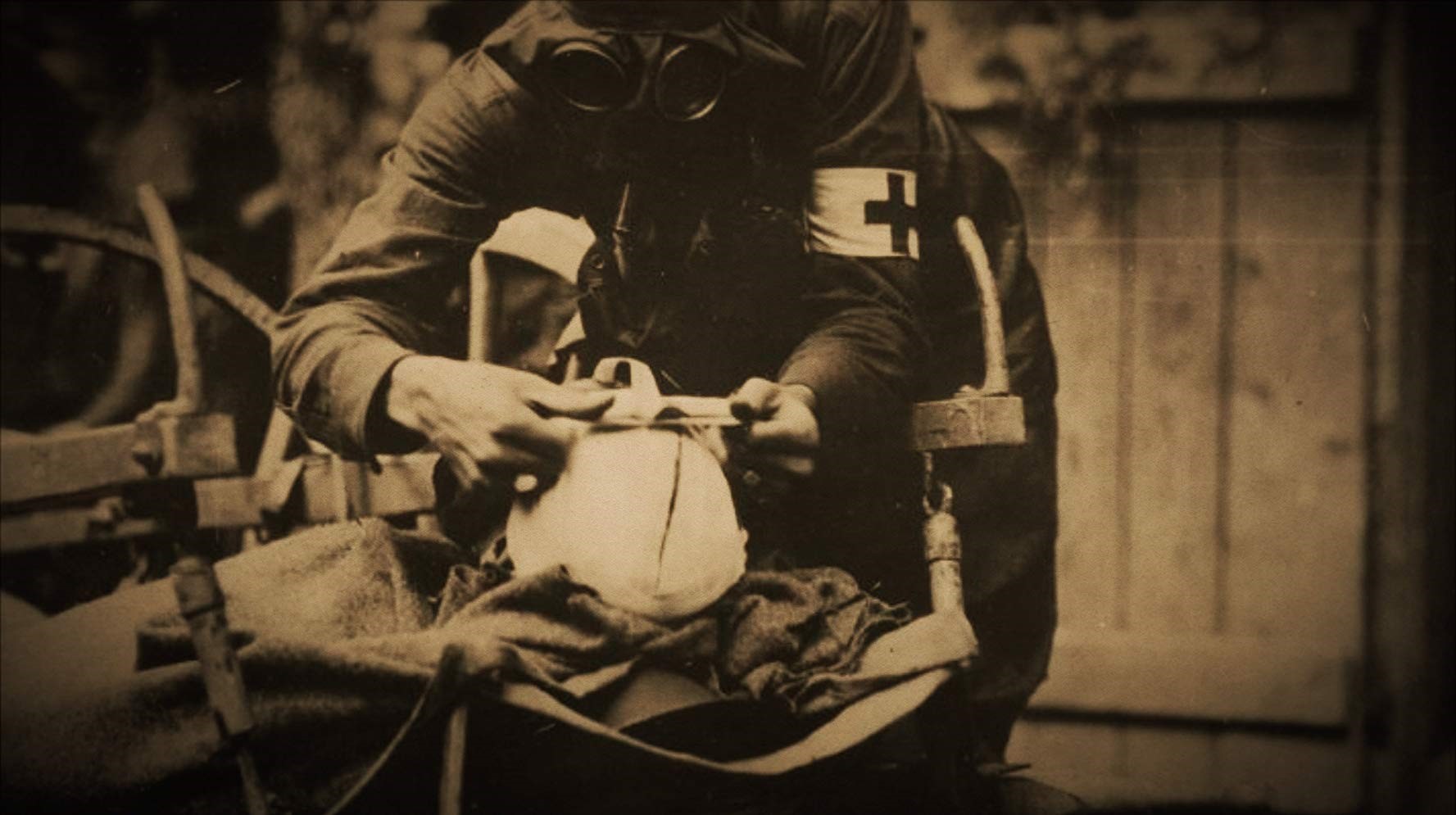
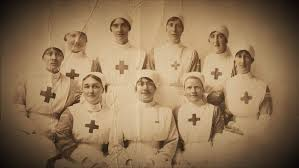
Life in the Military, according to Helen Fairchild (1917)
The sail to London was hard. Helen, as well as many other nurses and enlisted men became sick. After the first two days, everyone on the ship was given a paratyphoid vaccine. Helen commented "Everyone had to take it, and everybody had a severe reaction." By the time Helen arrived in London, she had felt better with no trace of sickness.
On June 7, 1917, around the same time Helen had arrived in London, the British forces had detonated 19 mines buried along a ride outside Messines, Belgium. A detonation this big had practically destroyed the city. It tore apart buildings, concrete, and bodies. According to National Geographic, the nearly 1 millions pounds of explosives created one of the largest human-caused explosions before the nuclear era. From places such as France, the tremor of the explosions was thought to be an earthquake.
Nurses from the Army Reserve Nursing Corps traveled by train along the coast of France to British Base Hospital No. 16, now known as American Base Hospital No. 10. The base seemed to have temporary accommodations. There were around 500 beds spaced out between tents and huts. Although this was a temporary military hospital base, there was a permanent hospital nearby, at the edge of the base--Canadian General Hospital No. 3.
When available, Helen was able to attend church services. Though familiar to her, the services, as well as many other small things, urged Helen to think of home, and would often write of the things she became homesick for.
Although it is not recorded to which religion Helen Fairchild or her family practiced, it is known that while at her first week at Base No. 16, she did attend a Presbyterian service at least once, on July 15, 1917. Just a few nights before Helen had written a letter detailing her church service attendance, we know that the Germans used mustard gas for the first time. This was meant to "disable the enemy and pollute the battlefield," though it proved to be much more harsh than that. It burned the flesh of soldiers and citizens alike down to their very bones, and dissolved in the linings of their lungs. During this time, British Base Hospital No. 16 (American Base Hospital No. 3) became flooded with patients. The hospital expanded to full capacity. Just days after, the British Medical Corps requested more surgical teams to be sent close to the front lines. Helen volunteered to go along with Dr. Richard Harte as his surgical nurse. [1][6][7]

Military Life
Helen was located in Ypres-Passchendaele an area of Belgium when she was assigned to the "Casualty Clearing Station No. 4" during this time the weather caused issues with wind and constant rain where she wrote a letter home to her mother that read "we all live in tents and wade through the mud to and from the operating room where we stand in mud higher than our ankles"; but the weather conditions were the last thing she was worrying about [8].
Station 4 was where patients were sent there who were previously wounded by the enemy's bombs and gunshots and then wounded a second time because of these same forces [8]. The sight of seeing wounded soldiers becoming wounded again could be very distressing for the nurses and doctors to repeatedly witness especially in the middle of the night.
Helen like so many other nurses expected to have wounded soldiers from bombs and shelling going on but everyone was in complete shock when the mustard gassing attacks started. She unfortunately experienced treaties being broken when it came to mustard gas use which eventually caused a large-scale of poisons being used and also included chlorine and phosgene gases being used as well on the battlefield [8].
Mustard gas use was by far the worst of the three and German forces used it for only two weeks prior to Helen arriving to Ypres-Passchendaele. Once gas was started to be used "at least one in every 10 shells was gas" and at times some gases could cause horrible affects long after the shelling stopped [8]. When an attack occurred Helen and other nurses had to scramble to get their masks on but get masks put on their patients as well which resulted in nurses suffering from "gas fright" or "gas mania" where they constantly worried about being gassed. During mustard gas use, if a soldier was contaminated with it on their clothes it could eventually affect everyone treating that one soldier and nurses had to take special precautions to prevent this from happening [8].
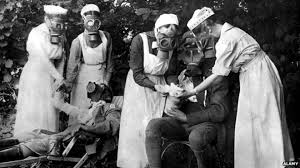
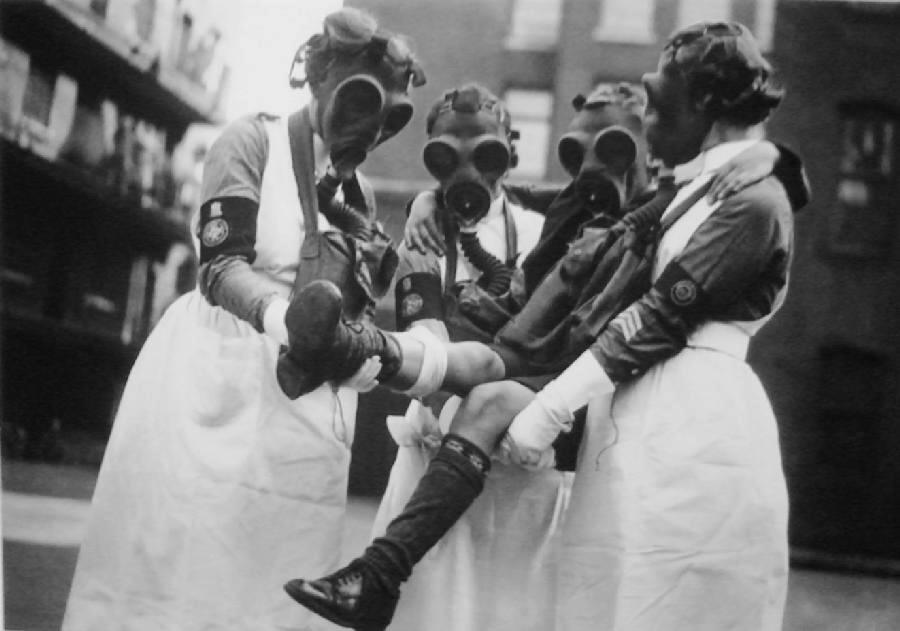
Helen continued to place her own life at risk so that she could continue to care for the wounded soldiers and those affected by mustard gas and other gasses. Helen volunteered to be at the front-line where she was later exposed to the gas when she gave up her mask to a soldier she was caring for at the time but also could have repeated exposure to mustard gas from what is learned from it now (Rote, N. F). It is possible that this exposure caused her to "develop tonsillitis and then intractable abdominal pain and vomiting" (Rote, N. F).[8][9]
Personal Experiences from the Letters written to Helen's mother
Helen would write home to her mother on a regular basis during one of these letters she wrote "we wear uniforms all the time, and our street uniforms are heavy dark blue serge, made very military, one piece, with big broad pleats over the shoulders with rows of big, black buttons down both sides, and swirls, with panels front and back, made quite short little white bands around the collar and sleeves, and sort blue hats. (Simkin, J.)" Working during a time when air conditioning was not an option and to wear what was required could have caused a lot of heat stroke. Helen and her fellow nurses would have to make sure that not only her patients stay hydrated regularly but that they themselves stayed hydrated as well. Helen further stated that they did not like the uniforms at first but eventually warmed up to the idea of having to wear them, including how it gives them protection and when they go places they are not charged for things (Simkin, J.).
She continued to grow as a nurse during her time in the military and was experiencing many things that so many other nurses were not experiencing. She would write to her mother about where she was located and how close she was not only to the base hospital of being about 100 miles from it but how close she was to the front lines. She stated that when she was there for three weeks how they "see no signs of going back yet, although when we came we only expected to here a few days." Since she did not expect to stay long Helen did not bring a lot of clothes with her and stated how she only brought two sets of dresses and aprons. Helen found it difficult to stay "decent" with little change of clothes especially when it would rain and at times rained every day (Simkin, J.).[10]
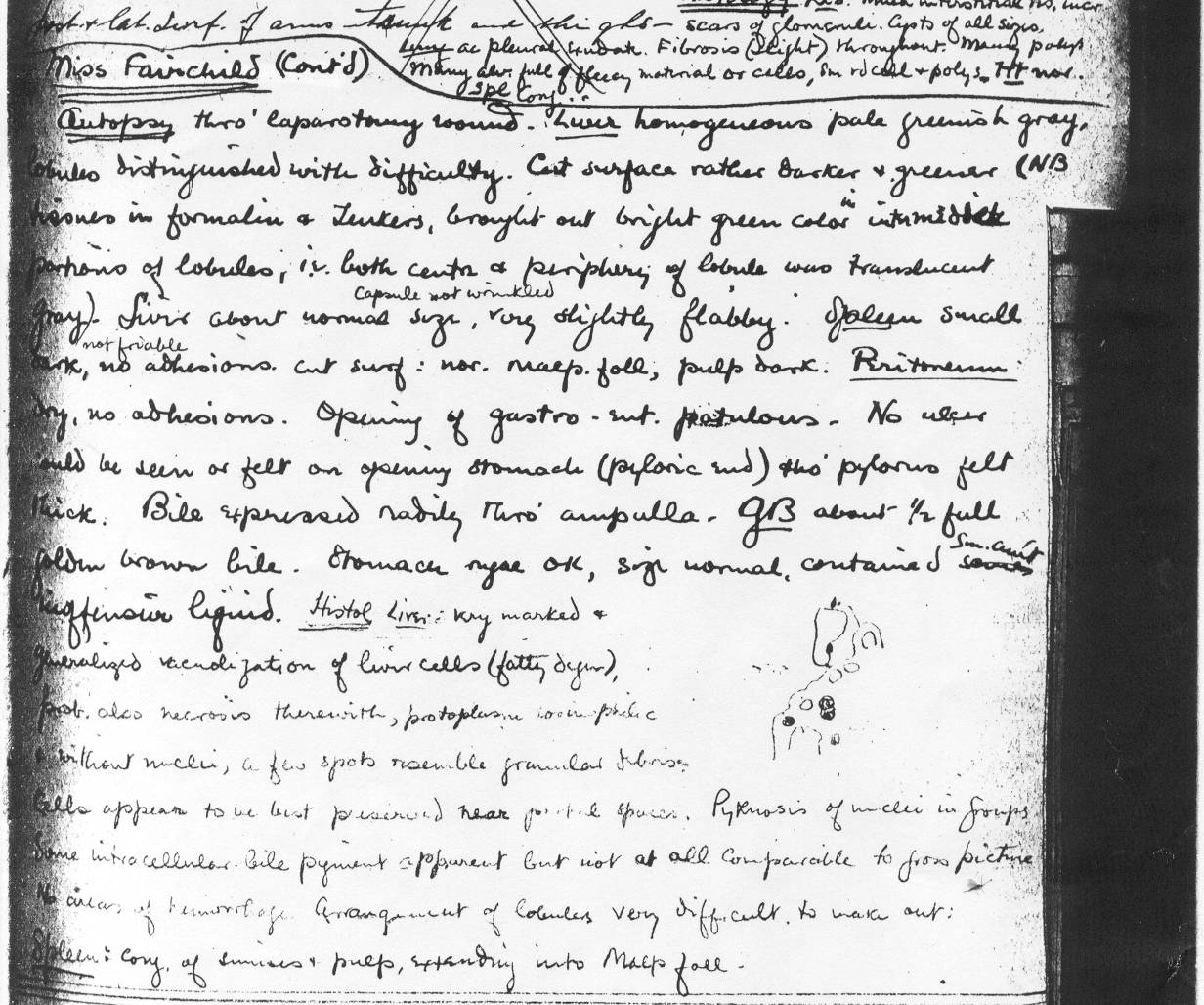
During Helen’s time spent working the front line she continued to write home to her mother writing to her the many experiences of what she went through during the war. One such letter Helen writes to her mother about the experience she went through just to sail across the ocean to get to wear she would start her military career. She stated in one letter how she became seasick almost instantly and seemed to have felt like she was dying. Later on the ship it was required for everyone to get the paratyphoid vaccine which she confirms that “everyone had to take it and everyone had quite a reaction. We were on the boat just eight days” [15]. With Helen already being seasick and then adding on the reaction from having the paratyphoid shot would have made the entire eight day ride a horrendous one.
Helen would continue to write home to her mom about the many experiences she witnessed and partook of, like hearing the star spangled banner being played and how it made her appreciate it own nation when she heard it for the first time on foreign land. She continued to write home about the uniforms she had to wear and how they made her feel even worse when she wrote home about what one soldier had said "I didn't know American girls were so ugly" [15]. Even though a soldier had said that to her Helen still wanted to be at the front lines to help save their lives. Helen would always sign her letter home with "Heaps and heaps of love, your very own, Helen" [15].
During Helen's time spent working through the war she wrote home about the horrors she had to witness during it. When she was located at the Ypres and during the "Third Battle of Ypres-Passchendaele, World War I" she wrote of one such instance of how causality areas were one of the most distressing sights she had to witness and further mentions how an enemy's bomb dropping during the dead of the night would cause the "re-wounding and killing of already wounded men" and she felt that not a single night would go by that a bomb was not dropped. Helen exclaims how they would dig "below the level of the ground to form shallow graves, two by six, by eighteen inches deep" which they dig through their tent floors then nailing down an iron sheet, Helen states how they used this as protection from enemy gunfire and from exploding shells . [15]
Helen would mention how impressed she was from the other women nurses who stood strong and did what they could to protect the wounded men and felt the were exceptionally brave women going and stated how a "night bombing is a terrifying thing, and those who are not disturbed by it possess unusual qualities. I believe the nurses showed less fear than anyone." [15]
Helen has spent so much time and effort taking care of the wounded men that she often forgot to take care of her needs first. As previously mentioned she would give her gas mask to the wounded men. Helen like so many nurses enjoyed being a nurse even though her put her life in grave danger. Even through all the despair and horror she had hoped to return home and wrote "I hope by next summer I can be home to help eat the peaches Irma tells me you are putting up. One of the girls brought me some great big, dandy ones a day or two ago, but they were so bitter I couldn't eat them." [15]
She longed for home and had believed she would one day walk through her parents' home.
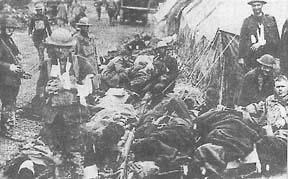
Background to World War 1
World War 1 (abbreviated as WW1) was the first war to bring many countries fighting against each other. There were many casualties, conflicts, technological advances, and world wide changes. WW1 started in July of 1914 and ended in November of 1918, lasting almost 4 1/2 years. Although we don't know many reasons of why, we do know a few things that happened.
There were alliances that had been created between countries prior to the actual start of WW1, and this is important to remember because if one country declared war, it usually meant that a few more would as well in a domino effect in result of the alliances formed. An alliance is an agreement between 2 or more countries that in time of war, one country would back up the other and fight alongside them. Between 1879 and 1914, nine alliances were formed between the bigger countries. 32 countries were involved in the war but the 2 main sides were the Allies which consisted of Britain, France, Russia, Italy and the United States, and they fought against the Central Powers which were Germany, Austria-Hungary, Ottoman Empire and Bulgaria.

The cause(s) of the war are still being debated and talked about, but what set off the declaration of war is known worldwide. Franz Ferdinand, the Austrian archduke, and his wife were assassinated in June of 1914 by a Bosnian revolutionary. The war started in July when Austria declared war on Serbia and from there it escalated into a world war.
In late 1914, the early stages of war consisted of Germany marching their way through Belgium over to France. Many men were lost in the process on both sides but the Germans still made it through, even though their progress was slowed down. There was some hope for the war to end but it had diminished over the holidays as men started digging trenches by Christmas. There were many battles that continued on throughout the following 4 years, but it definitely progressed into the big war that it ended as. Some countries waited until later in the war to join, such as the United States of America.
The war started coming to a close about October when the Allies recover France and Belgium and then the Armistice was signed in Redonthes (a French town), bringing the war to an end. [11][12]
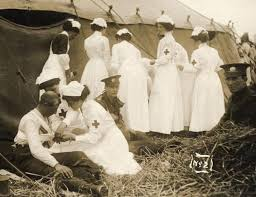
Weapons in War
In WW1 there was a fresh wave of new ways to kill someone. New weapons and methods were developed for killing and destruction. There were rifles, machine guns, artillery, flame throwers, poison gas and more. Mustard Gas, or Sulfur Gas, Chlorine Gas and Phosgene were the 3 substances that caused the most casualties and deaths in the war. After WW1 there was an international ban on poison gases, and they are no longer allowed in warfare.
Mustard Gas is a chemical warfare agent that is not found naturally but used most often. It is potent, smells of garlic, onions or mustard if it isn’t odorless, and it can have a yellowish tint, or if it is a solid then it can be brown. It was commonly used in vapor form so that it would affect more soldiers. When it touches the skin, it irritates and begins to blister after about 24 hours. The results are not immediate, but they are painful. It causes blisters in moist spots such as armpits and genitals and if the blisters pop, they usually get infected. When inhaled it irritates the lungs and makes it difficult to breathe. [5]
Chlorine Gas is a greenish- yellow color that smells of bleach. As soon as it comes in contact or is inhaled it irritates the lungs, throat, eyes, and nose of those who it comes in contact with. Although this one usually isn't deadly, it can kill with a high enough dose through asphyxiation (a deficient supply of oxygen, it's like choking because of lack of air.)
Phosgene is the deadliest and caused 85% of the chemical/weapon fatalities in WW1. It is another irritant, but it is 6 times more deadly than chlorine gas. Although it smells like moldy hay, it is colorless, and soldiers didn't know if they received a fatal dose until later when the results really stepped in. The lungs would fill with fluid, suffocating them from inside out, until they died. Germans were the first to use it, but the Allies used it the most.
This wouldn't just affect the soldiers; it would also affect the medical. Nurses were constantly on the lookout and on watch to make sure that they could get their gas masks on as well as their patients before it really started to kick in. All of these gases could leave permanent damage or long-lasting effects such as asthma, blindness, scarring, and a higher chance of lung cancer. [14]
Nursing During the War
To be an American nurse in the war you could go through two organizations. The American Red Cross or Army Nurse Corps (ANC). There were regulations and requirements to be a nurse, especially overseas, in the war. To be a U.S. Army Nurse you were an unmarried female between 25 and 35. You were Caucasian and graduated from training schools for nursing. (France and Britain requested the nurse graduates be sent because of the knowledge and training they had). However, because of the war and the need, the requirements changed around a little bit.
Nurses were a part of the army, but they were not enlisted or commissioned, and they were not trained as soldiers. This also plays into how they were not given a military rank like they are today. Sometimes the lack of a rank caused problems with other men because of the authority, or lack thereof. This changed when the men realized that the women were there for patient care, but it changed when the women showed attributes such as stamina, knowledge, and a sense of humor in hard times.
U.S nurses worked where they were needed in the war, but this varied depending on where they were stationed. They worked in hospital trains and ships as well as bases, evacuation hospitals and mobile units, usually were on surgical teams, but no matter where they were it was one nurse for 10 beds. The army originally estimated 10,000 but ended with about 40,000 nurses by the end of March 2018. For the nurses out in the field, they were supposed to work in the back, not around the battlefield in dangerous conditions. This changed, however, because special treatment teams that were required to get up close had nurses as key components. This was a big way that females tested the waters on how close women could be to the battlefields and facing danger. [13]
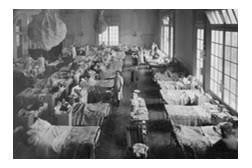
Helen's Final Days
Helen Fairchild passed away on January 18, 1918 There are a couple different explanations of why Helen died, some reports said it was from chloroform anesthesia, others suggest the surgery went wrong, but overall people came to the consensus that it was over exposure to the chlorine.
It is believed that because of exposure to Mustard gas and the anesthesia, that Helen died in her early years. Helen was in a casualty clearing area near the end of her time as a nurse. Here, there were nightly bombings and an undocumented report was found from one of these nights, in which Helen gave her gas mask to a soldier. After being as the casualty clearing area, she returned back to base hospital where she got tonsillitis in November of 1918.
Helen's stomach pain came back after her experience with being exposed to the mustard gas and tonsillitis. Steadily it came back until getting worse November 1917 before she left for France and around Christmas she was able to have a Barium meal X-Ray done. After Christmas she was throwing up her food and had found she had a large gastric ulcer obstructing her pylorus. The pylorus is what connects the stomach to the small intestine. Late, Helen then had surgery to remove the ulcer on January 13, 1918. She was recovering fairly well at the time but later becoming jaundiced 3 days after her surgery. Some sources say that she fell into a coma, but 5 days after her surgery she died. Her cause of death was from liver failure and the autopsy noted that it was because of overuse of chlorine in her system. Helen was in a lot of pain the day she died, and had no desire to be touched. A letter was sent home January 24, 1918 to inform the family that Helen died of atrophy (wasting away) of the liver. Helen Fairchild's grave can be found in LeTreport to Somme American Military Cemetery, Bony, France. [1][2][3][4][15]
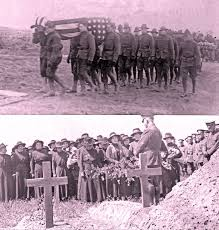
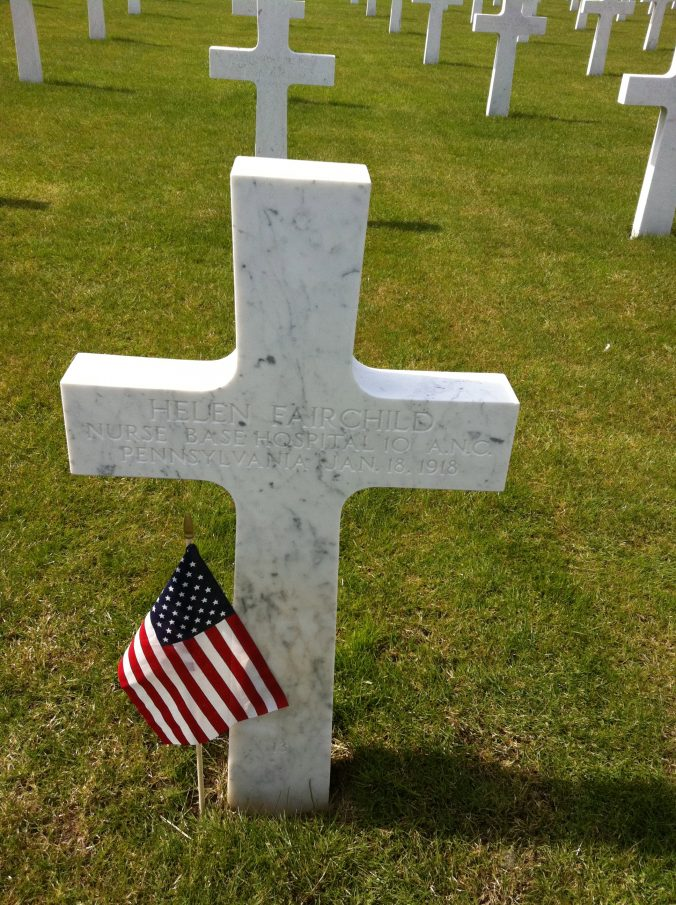
References
- "Helen Fairchild, White Deer Valley's Own". http://www.unioncountyhistoricalsociety.org/Accounts/Oct2017/8.pdf
- "My Aunt, My Hero." http://www.gwpda.org/medical/MaMh/MyAunt.htm
- Petiprin, Alice. Helen Fairchild, Reflection in Nursing." http://www.nursing-theory.org/famous-nurses/Helen-Fairchild.php
- AAHN. "Helen Fairchild. http://www.aahn.org/fairchild.
- U.S. Department of Health & Human Services. "CDC | Facts About Sulfur Mustard." emergency.cdc.gov/agent/sulfurmustard/basics/facts.asp.
- 6. Foulkes, C. H. ’Gas!’ : The Story of the Special Brigade. http://search.ebscohost.com.ezproxy.uvu.edu/login.aspx?direct=true&db=nlebk&AN=434887&site=eds-live
- Shea, Neil. This Explosion Was the Biggest Blast Before Atomic Bombs. https://news.nationalgeographic.com/2017/06/biggest-blast-before-atomic-bombs-messines-world-war/
- Electricpulp.com. (n.d.). Helen Fairchild, RN (1885-1914), Witness to the Horrors of Poison Gas During WWI. https://www.workingnurse.com/articles/Helen-Fairchild-RN-1885-1914-Witness-to-the-Horrors-of-Poison-Gas-During-WWI
- Rote, N. F. (n.d.). Nurse Helen Fairchild: WWI 1917-1918 by Nelle Fairchild Hefty Rote on Ground Zero Books, Ltd. https://www.groundzerobooksltd.com/pages/books/43968/nelle-fairchild-hefty-rote/nurse-helen-fairchild-wwi-1917-1918
- Simkin, J. (n.d.). https://spartacus-educational.com/Wfairchild.htm
- "World War 1: A Comprehensive Overview of the Great War";https://www.historyonthenet.com/world-war-1-comprehensive-overview-great-war
- http://aenet.esuhsd.org/citizenship_lessons/connie/wwI_q.html
- https://e-anca.org/History/Topics-in-ANC-History/Contributions-of-the-US-Army-Nurse-Corps-in-WWI
- https://www.sciencehistory.org/distillations/a-brief-history-of-chemical-war
- http://www.vlib.us/medical/MaMh/MyAunt.ht